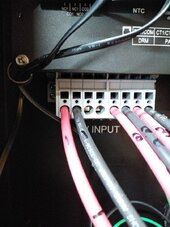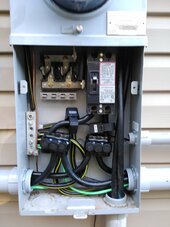In this post:

 diysolarforum.com
diysolarforum.com
Two options are presented for wiring the SPD. Regardless of the option chosen, what is the preferred way to do the physical wiring? As the SPD is wired in parallel, I see several options to avoid double tapping the breaker:
1. Tap splice (This seems cheap)
2. Double lug
3. Another busbar (May not be possible in a given enclosure)
4. Pigtail
For sake of argument, let's say we are dealing with 10 AWG and a 20A breaker.
Any thoughts?

Correct wiring for Solar Panel SPD
Which of these two wiring diagram is the correct method of installing a DC SPD for Solar Panels? Please give your reason. Assume that the above listed components are inside a single box. Thanks Dan
Two options are presented for wiring the SPD. Regardless of the option chosen, what is the preferred way to do the physical wiring? As the SPD is wired in parallel, I see several options to avoid double tapping the breaker:
1. Tap splice (This seems cheap)
2. Double lug
3. Another busbar (May not be possible in a given enclosure)
4. Pigtail
For sake of argument, let's say we are dealing with 10 AWG and a 20A breaker.
Any thoughts?





